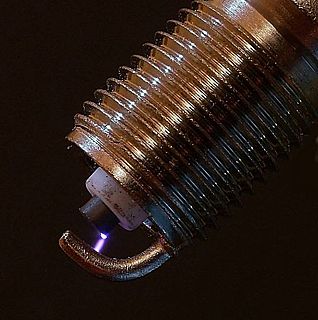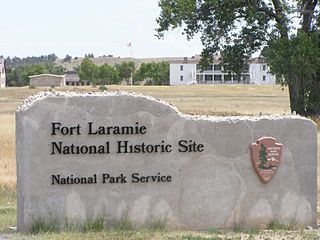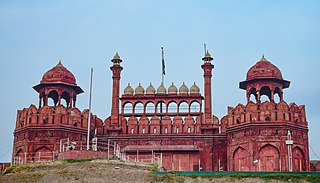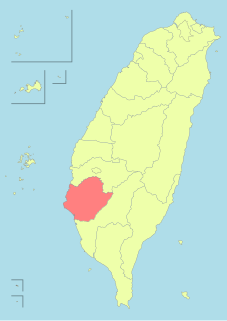Related Research Articles

The French and Indian War (1754–1763) pitted the colonies of British America against those of New France, each side supported by military units from the parent country and by Native American allies. At the start of the war, the French colonies had a population of roughly 60,000 settlers, compared with 2 million in the British colonies. The outnumbered French particularly depended on the natives.

A Tesla coil is an electrical resonant transformer circuit designed by inventor Nikola Tesla in 1891. It is used to produce high-voltage, low-current, high frequency alternating-current electricity. Tesla experimented with a number of different configurations consisting of two, or sometimes three, coupled resonant electric circuits.

A spark plug is a device for delivering electric current from an ignition system to the combustion chamber of a spark-ignition engine to ignite the compressed fuel/air mixture by an electric spark, while containing combustion pressure within the engine. A spark plug has a metal threaded shell, electrically isolated from a central electrode by a ceramic insulator. The central electrode, which may contain a resistor, is connected by a heavily insulated wire to the output terminal of an ignition coil or magneto. The spark plug's metal shell is screwed into the engine's cylinder head and thus electrically grounded. The central electrode protrudes through the porcelain insulator into the combustion chamber, forming one or more spark gaps between the inner end of the central electrode and usually one or more protuberances or structures attached to the inner end of the threaded shell and designated the side, earth, or ground electrode(s).

Renaissance Man is a 1994 American comedy film directed by Penny Marshall, and stars Danny DeVito, Gregory Hines, James Remar and Cliff Robertson. In Australia, the film is known under the title of Army Intelligence.

The Battle of Fort Sumter was the bombardment of Fort Sumter near Charleston, South Carolina by the South Carolina militia, and the return gunfire and subsequent surrender by the United States Army, that started the American Civil War.

The Territory of Kansas was an organized incorporated territory of the United States that existed from May 30, 1854, until January 29, 1861, when the eastern portion of the territory was admitted to the Union as the free state of Kansas.

The Lahore Fort is a citadel in the city of Lahore, Punjab, Pakistan. The fortress is located at the northern end of walled city Lahore, and spreads over an area greater than 20 hectares. It contains 21 notable monuments, some of which date to the era of Emperor Akbar. The Lahore Fort is notable for having been almost entirely rebuilt in the 17th century, when the Mughal Empire was at the height of its splendour and opulence.
Leil was a legendary king of the Britons as accounted by Geoffrey of Monmouth. He was the son of King Brutus Greenshield.

Richard Barnes Mason was a career officer in the United States Army and the fifth military governor of California before it became a U.S. state. He came from a politically prominent American family and was a descendant of George Mason, a framer of the U.S. Constitution and father of the Bill of Rights.

A spark-gap transmitter is an obsolete type of radio transmitter which generates radio waves by means of an electric spark. Spark-gap transmitters were the first type of radio transmitter, and were the main type used during the wireless telegraphy or "spark" era, the first three decades of radio, from 1887 to the end of World War I. German physicist Heinrich Hertz built the first experimental spark-gap transmitters in 1887, with which he proved the existence of radio waves and studied their properties.

Fort Laramie was a significant 19th-century trading post, diplomatic site, and military installation located at the confluence of the Laramie and the North Platte rivers. They joined in the upper Platte River Valley in the eastern part of the U.S. state of Wyoming. The fort was founded as a private trading post in the 1830s to service the overland fur trade; in 1849, it was purchased by the United States Army. It was located east of the long climb leading to the best and lowest crossing point of the Rocky Mountains at South Pass and became a popular stopping point for migrants on the Oregon Trail. Along with Bent's Fort on the Arkansas River, the trading post and its supporting industries and businesses were the most significant economic hub of commerce in the region.

The Red Fort is a historic fort in the city of Delhi in India that served as the main residence of the Mughal Emperors. Emperor Shah Jahan commissioned construction of the Red Fort on 12 May 1638, when he decided to shift his capital from Agra to Delhi. Originally red and white, its design is credited to architect Ustad Ahmad Lahori, who also constructed the Taj Mahal. It was constructed between May 1639 and April 1648.

Fort Edgecomb, built in 1808–1809, is a two-story octagonal wooden blockhouse with restored fortifications located on Davis Island in the town of Edgecomb, Lincoln County, Maine, United States. It is the centerpiece of the Fort Edgecomb State Historic Site. It was added to the National Register of Historic Places in 1969, with its boundaries increased to create a historic district in 1991.

A California Historical Landmark (CHL) is a building, structure, site, or place in California that has been determined to have statewide historical landmark significance.

The Texas Cowboy Hall of Fame, a western, historical museum in Fort Worth, Texas, United States, "honors those men and women who have shown excellence in the business and support of rodeo and the western lifestyle in Texas."

The Guo Huaiyi rebellion was a peasant revolt by Chinese farmers against Dutch rule in Taiwan in 1652. Sparked by dissatisfaction with heavy Dutch taxation on them but not the aborigines and extortion by low-ranking Dutch officials and servicemen, the rebellion initially gained ground before being crushed by a coalition of Dutch soldiers and their aboriginal allies. It is considered the most important uprising against the Dutch during the 37-year period of their colonisation of Taiwan.
Fort O'Rourke is a former Union Army installation now located in the Belle Haven area of Fairfax County in the U.S. state of Virginia. It was the southernmost fort built to defend Washington, D.C. in the American Civil War.

The Nike Sport Research Lab is a research and development institute located in Beaverton in the U.S. state of Oregon. Opened in 1980, the lab is owned by American apparel and footwear maker Nike. Commercials for the facility have featured famous NBA and PGA athletes talking positively about the products and the research behind them.
The Battle of Lindley's Fort was part of a campaign by Loyalist and Cherokee forces to gain control over the South Carolina backcountry from Patriot forces early in the American Revolutionary War. The Cherokees were involved because ongoing encroachment of their territory in the area had led them to take up arms. These activities prompted settlers to seek refuge at Lindley's Fort in present-day Laurens County. A joint force of Cherokee and Loyalists adorned with Indian warpaint descended on the fort one day after about 150 militiamen arrived at the stockade fort. The defenders repulsed the attackers, and when they withdrew, made a sortie and pursued them. Two Loyalists were killed and 13 taken prisoner.
The Texas Equal Rights Association (TERA) was the first woman's suffrage association to be formed state-wide in Texas. The organization was founded in 1893 and was an affiliate of the National American Woman Suffrage Association. The TERA was meant to "advance the industrial, educational, and equal rights of women, and to secure suffrage to them by appropriate State and national legislation." It was also an answer to Texas Governor James Stephen Hogg, who had stated publicly in a trip to the north that women's suffrage "had not reached Texas." The organization was firmly "non-sectarian," stating that "it has no war to wage on religion, church or kindred societies."
References
- ↑ Sipe, Chester Hale (1932). Fort Ligonier and its times: a history of the first English fort west of the Allegheny Mountains... (PDF). The Telegraph Press. p. 300.
- ↑ Van Voorhis, John Stogdell (1893). The Old and New Monongahela. Nicholson, printer. p. 299.
Spark's Fort.
| | This Fayette County, Pennsylvania state location article is a stub. You can help Wikipedia by expanding it. |